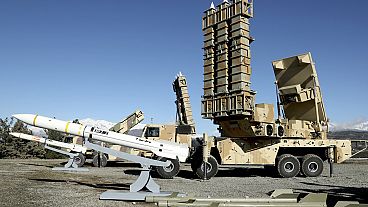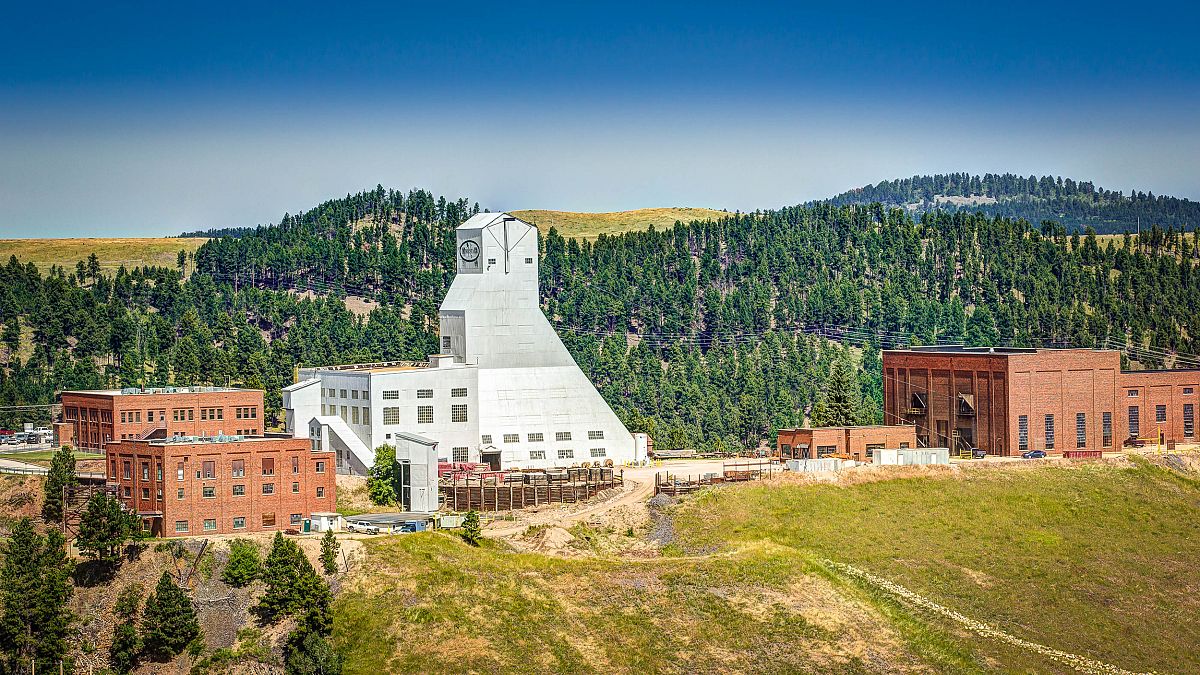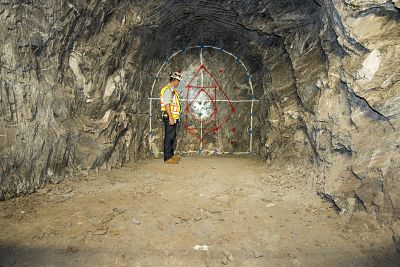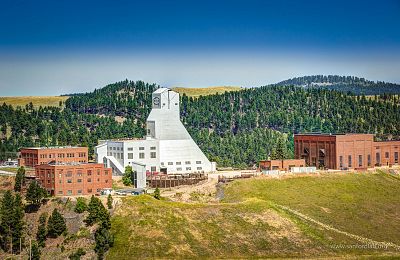Why is the universe full of matter?
More than 1,000 scientists from 30 countries are gearing up for an ambitious multi-year experiment to see if a close look at the smallest subatomic particle known to exist — the neutrino — can help answer some of science's biggest unresolved questions.
The Deep Underground Neutrino Experiment (DUNE) will involve shooting beams of neutrinos from a particle accelerator in suburban Chicago through the Earth to a neutrino detector set up in an abandoned mine 800 miles away in South Dakota. Though DUNE won't get going for several years, its scientists are already working on necessary modifications to the accelerator, and building smaller, prototype versions of the vast detector — and feeling amped about what they might learn from the experiment.
"You can live a happy life without knowing much about neutrinos, but they're one of the real keys to the way our universe developed after the Big Bang, and why it works the way it does," says University of Chicago physicist Edward Blucher, one of DUNE's two co-leaders. "Right now scientists guess that the most plausible explanation is that neutrinos played a key role in what happened early in the universe, but DUNE is going to give us some real hints as to what actually happened."
A century-old mystery
The main question that scientists hope DUNE will help answer is this: Why is there matter in the universe?
What sounds like a silly question is actually one that has bedevilled physicists since the late 1920s, when the Belgian physicist Georges Lemaitre came up with the idea that the universe began with a colossal outpouring of energy — the Big Bang.
Physicists have long believed that the Big Bang produced equal amounts of matter and an identical but oppositely charged substance known as antimatter. But if this belief is correct, why is antimatter all but non-existent in the universe while matter is everywhere, making up everything from stars and planets to the atoms in our bodies?
DUNE scientists believe they can take a major step toward answering this fundamental question by proving for the first time that neutrinos and their antimatter counterparts, antineutrinos, behave differently.
A single neutrino isn't much — just a mote of matter having less than one-billionth of the mass of a hydrogen atom. But neutrinos are produced in vast quantities by the nuclear reactions taking place continuously in the sun and other stars, and they're thought to be crucial to understanding the universe's earliest moments.
"This experiment is one small step in a journey to try and understand what actually happened in the very early universe," says Nigel Lockyer, director of the Fermi National Accelerator Laboratory (Fermilab), just west of Chicago, which hosts DUNE's particle accelerator. "Neutrinos are absolutely everywhere, they're the most ubiquitous particle in the universe, so they must have played a big role."
Physicists believe that in the first millionth of a second following the Big Bang, the world was made up of a swirling mass of neutrinos and antineutrinos, which then "decayed" to form particles of matter and antimatter. Neutrinos are thought to have decayed at a faster rate than antineutrinos, producing an excess of matter that led ultimately to the universe we see today.
"To prove this, we'd love to build a very powerful accelerator to produce those conditions in the early universe and study how those neutrinos decayed," Blucher says. "The trouble is, the energy you would need is probably a billion times larger than for CERN's Large Hadron Collider," he added, referring to the Geneva, Switzerland-based physics facility that features a 17-mile tunnel. "It's an experiment that people don't think you could possibly do."
Quirky behavior
Instead, DUNE scientists believe they can gather enough evidence to infer that the differing decay rates really do explain the preponderance of matter. The key will be to study a quirk of neutrino behavior.
Neutrinos come in three types — muon neutrinos, tau neutrinos and electron neutrinos. As these particles move through space, they repeatedly change from one type to the other. Scientists think they do this more rapidly than antineutrinos, and that these rapid changes explain the differing decay rates of neutrinos and antineutrinos.
But neutrinos are notoriously difficult to study, in part because they change only over distances of hundreds of miles — which is why DUNE will send beams of neutrinos and antineutrinos all the way from Illinois to South Dakota.
Giant particle beams
Although neutrinos are everywhere — a trillion or so zoom through our bodies every second — they almost never interact with the things they encounter. This means DUNE must generate vast numbers of neutrinos and antineutrinos and focus them into beams that are of such high intensity that the super-sensitive detector in South Dakota might be able to see them.
The detector, located in the Sanford Underground Research Facility in Lead, South Dakota, is the world's largest. It consists of a 70,000-ton vat of liquid argon, an extremely dense substance. Because its atoms are so tightly packed, the beamed neutrinos are more likely to collide with one of the atoms rather than simply passing between them.
With each collision that registers, DUNE scientists should be able to determine whether the neutrinos and antineutrinos have changed type — for example, from a muon neutrino to an electron neutrino.
Each beam should take about four milliseconds to travel from Illinois to Chicago, and DUNE's accelerator will send the beams once every second over the course of many years. If neutrinos change more rapidly than antineutrinos, as expected, we can be more confident that neutrino decay helps explain the presence of matter in the universe.
But the scientists understand that they might see something entirely different. "Over time we're going to count the numbers of each charged particles we get from the neutrino beam and the antineutrino beam, and if those numbers are quite different, then it's a big effect we're looking at," Lockyer says. "But if there's no difference at all, we might be chasing down the wrong street."





